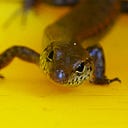Member-only story
A Not Very Hungry Caterpillar
The scourge of my plants
Life is up and down at the moment with the increasing pressure of finding a new place to rent, so I’ve been throwing myself into my plants. (Not literally, of course. Although there was a dodgy moment at the nursery when I tripped over a tree root and almost landed faced first in the Eucalyptus tube stock. Luckily, I regained my balance and the Carbeen saplings escaped a flattening.)
While repotting today, I noticed that something had been helping itself to the Red Tulip Oak (Argyrodendron peralatum, Malvaceae). This tree is native to the Queensland Wet Tropics, growing in rainforest from coast to mountain tops. It is doing well in its pot. Over summer it put on a big growth spurt, but the cool, dry weather is here now and things are slowing down. The poor plant was barely keeping ahead of the leaf-eater.
As I pondered on the destruction, a shiny little face peered up at me. The shiny face was framed by two bunches of long black bristles that looked adorable but were guaranteed to make me want to rip off my skin if they made contact. Safe in its coat of irritating hair, the culprit kept chewing. Some leaves still remained.
